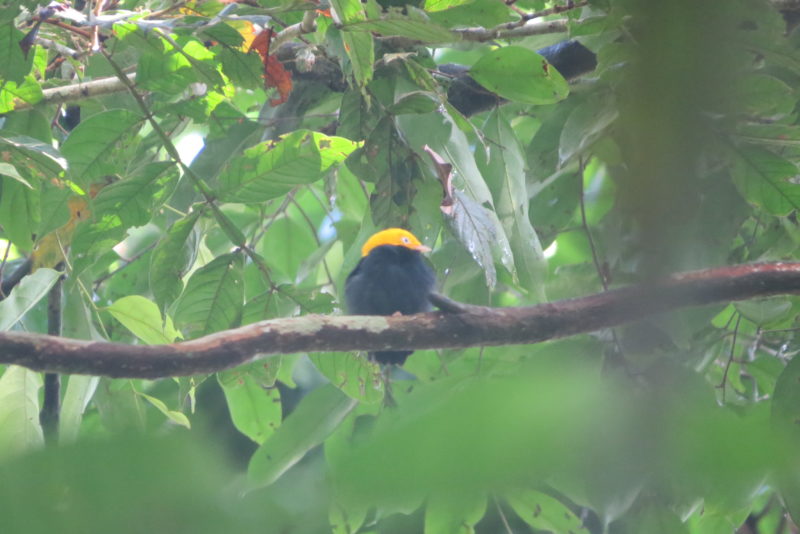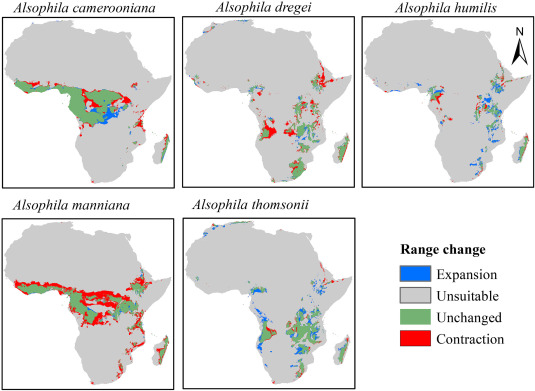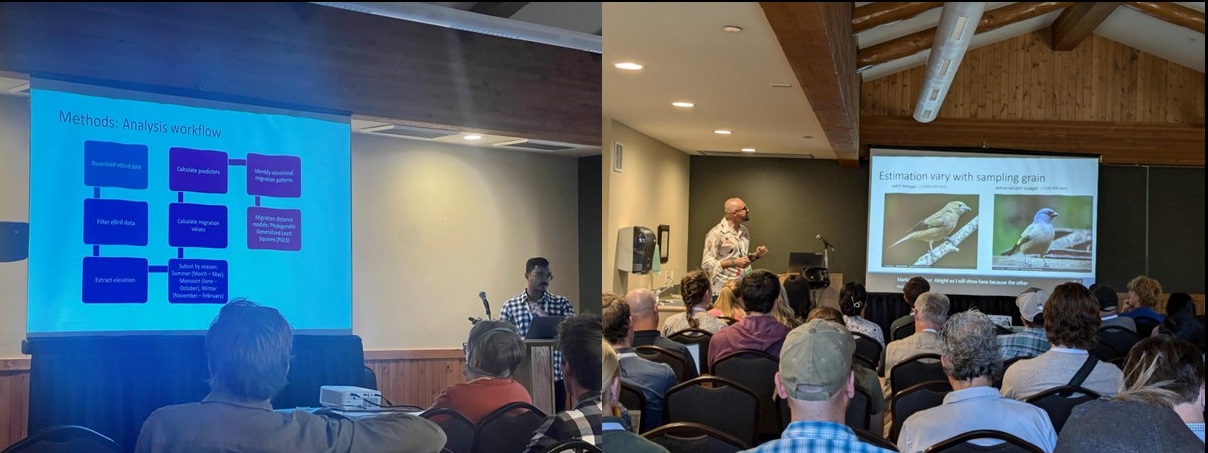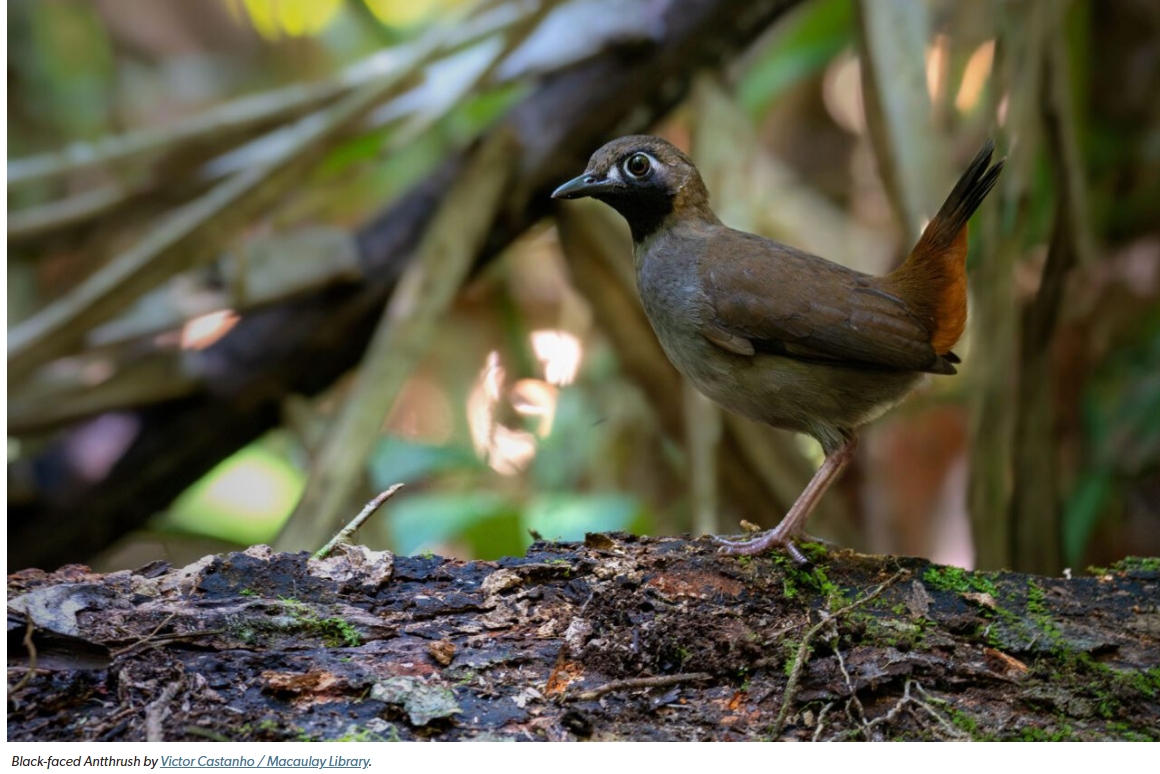We began this long-term project on birds, with a particular focus on manakins (Aves: Pipridae) in January of 2001. The site – Tiputini Biodiversity Station in Yasuni Biosphere Reserve – is in western Amazonia and is arguably one of the most biodiverse-rich locations on the planet. The field station is operated by the Universidad San Francisco de Quito where other long-term projects on insects, bats and primates are on-going, and work on fish, turtles, caimans, and plants have also occurred. Bette just completed about 3 weeks of field work in December, and her collaborator John Blake is at the site for 3 months; Bette returns in late January for another field visit. The focus of the December 2016 field trip was to revisit male display sites at leks for two species – Dixiphia pipra, white-crowned manakin, and Chiroxiphia pareola, blue-backed manakin. Territory occupancy by males has been studied for much of the 17 years. Some males have incredibly long tenure with a blue-backed manakin male achieving at least 19 years of age and being alpha male for more than 10 years! The picture above is of a Pipra erythrocephala, golden-headed manakin which hold classical leks and display from about 6-15+ m high. A short clip of a cooperative dance display of blue-backed manakins can be found here. This particular sequence lasted about 20 minutes. To see more of our work on manakins, visit the Publications page.
By loiselleb@gmail.com|
2017-01-01T14:48:20+00:00
January 1st, 2017|Amazon, birds, ecology, Ecuador, manakins, research, sexual selection|0 Comments













Recent Comments